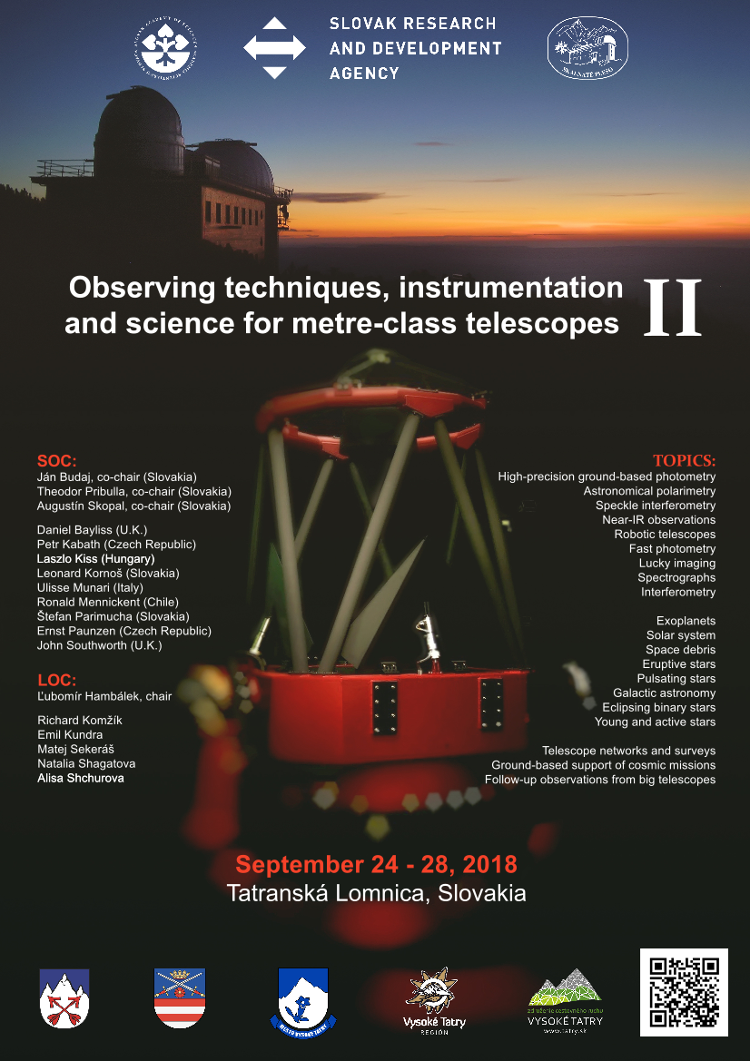for metre-class telescopes
II
Large telescopes excel in the studies of faint objects at the edge of the observable Universe and high-angular and spectral resolution of astrophysically important objects. Small telescopes (diameter < 2m), however, are valuable in astronomical research doing long-term monitoring, continuous observations, or large-scale surveys. A large flotilla of small telescopes can often provide observations which would be cost prohibitive at large telescopes. Most of astrophysically crucial objects are still being discovered through extensive all-sky surveys run by robotic telescopes. Small telescopes continue to play a vital role in recruiting and training the next generation of astronomers and instrumentalists, and serve as test beds for developments of novel instruments and experimental methods for larger telescopes.
This year we will celebrate the 75th anniversary of the first observation at our Skalnaté Pleso Observatory. Thanks to the the European Regional Development Fund (ITMS No. 26220120029) the observatory is taking a new breath - a new 1.3m telescope. Several advanced focal instruments are being developed as well. By organizing this conference we cordially invite ideas and discussions on the technological developments and scientific programs for such small-size and robotic telescopes.
